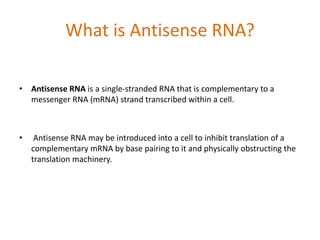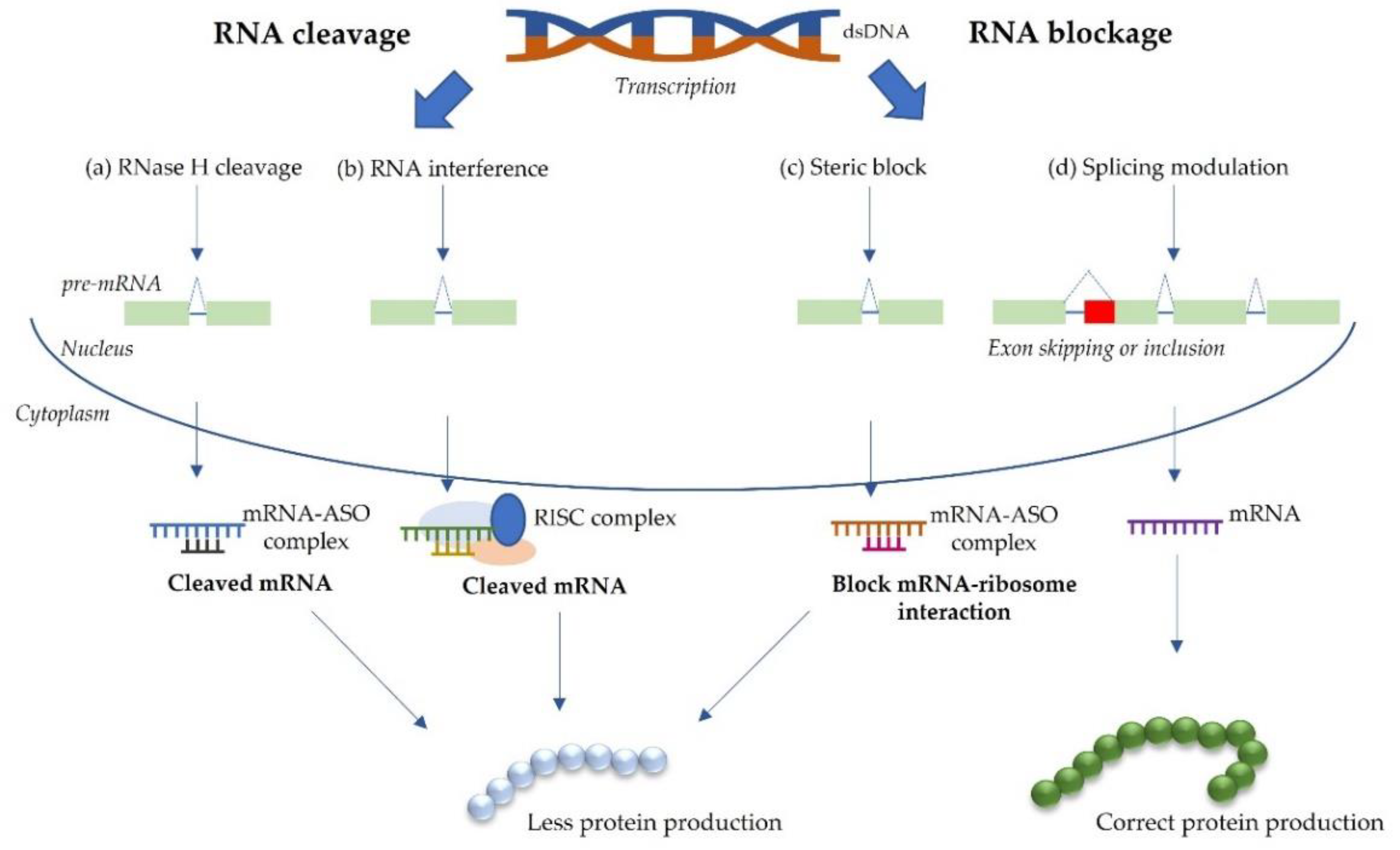Antisense technology is a method of gene regulation that involves the use of small, single-stranded oligonucleotides to specifically bind to and inhibit the expression of a specific gene. This is achieved by targeting the mRNA produced by the gene, which is the intermediate molecule that carries the genetic information from DNA to the ribosomes, where it is translated into a protein. By inhibiting the mRNA, antisense technology effectively prevents the gene from being expressed and the corresponding protein from being produced.
The mechanism of antisense technology relies on the specific base-pairing properties of nucleic acids. DNA and RNA are composed of a series of nucleotide bases (adenine, cytosine, guanine, and thymine in DNA; adenine, cytosine, guanine, and uracil in RNA) that are arranged in a specific sequence. The complementary base pairs are adenine and thymine, and cytosine and guanine. This means that if a single-stranded oligonucleotide containing a specific sequence of bases is designed to target a specific mRNA molecule, it will bind to it through base-pairing interactions.
Antisense oligonucleotides can be synthesized chemically or produced using in vitro transcription methods. Once they are synthesized, they are administered to cells or organisms in a variety of ways, including intravenous injection, oral delivery, and local delivery to specific tissues. The oligonucleotides are then taken up by cells and can bind to their target mRNA molecules.
There are several mechanisms by which antisense oligonucleotides can inhibit gene expression. One mechanism is by simply blocking the translation of the mRNA into protein. The oligonucleotide may bind to the mRNA molecule in such a way that it physically blocks the ribosome from accessing it and translating it into protein. Another mechanism is by causing the degradation of the mRNA molecule. The oligonucleotide may bind to the mRNA and recruit enzymes called ribonucleases, which can break down the mRNA and prevent it from being translated.
Antisense technology has many potential applications in the fields of medicine and biotechnology. It has been used to study gene function, to develop therapies for genetic diseases, and to produce genetically modified organisms with desired traits. However, there are also challenges to the use of antisense technology, including the potential for off-target effects and the difficulty of delivering the oligonucleotides to the appropriate cells in the body.
Overall, antisense technology is a promising approach to regulating gene expression and has the potential to revolutionize the treatment of genetic diseases and the production of genetically modified organisms. However, it is important to continue to explore the mechanisms of action and potential limitations of this technology to ensure its safe and effective use.









